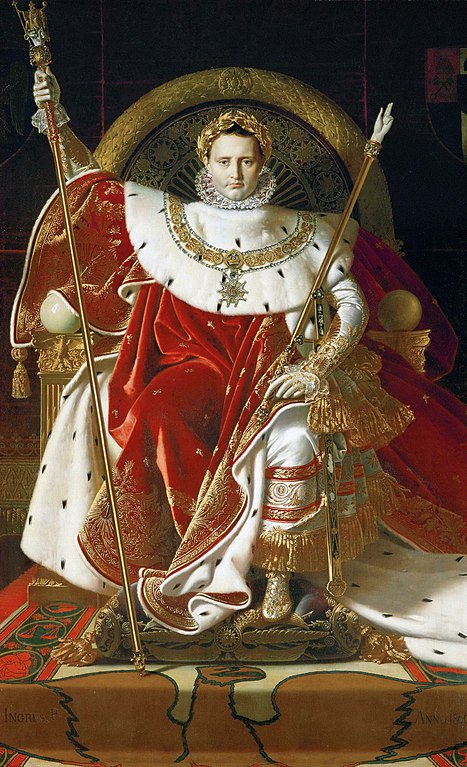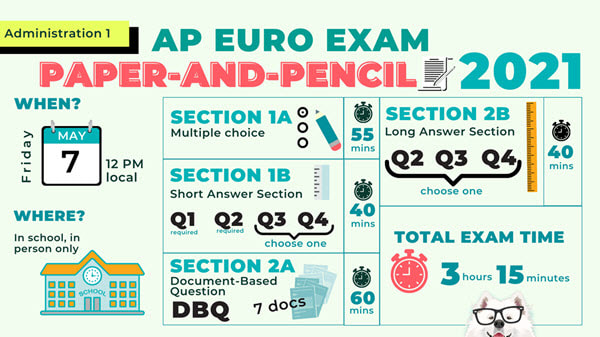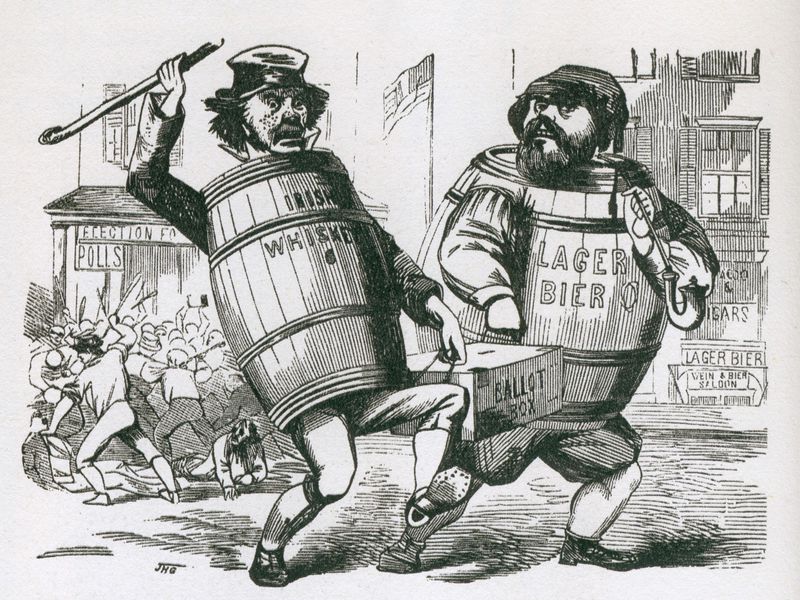A few days after the 2021 free-response questions were released, I solved the 2021 DBQ within the one-hour time limit. I found that while the topic was not equally easy to argue from both sides, it was very easy to craft an argument against liberalism in British India while also making a counter-argument that liberalism was present in British India to an extent. Although this did not occur to me during the first pass, there is a way to create an argument for liberalism being the driving influence of British governance in India if one would take the critical newspaper articles and point out how they show a lack of censorship.
0 Comments
The French Revolution is one of the most important events in modern European history, setting the stage for the spread of popular government not only in Europe, but also onto every inhabited continent. While the French Revolution could be explained in an infinite number of ways, I am highlighting five causes in this post. Click here to download this guide in a printable PDF format. 1. The French Financial Crisis
3. The Rise of the Bourgeoisie
4. The Influence of Enlightenment Philosophy
5. The Ineptitude of Louis XIV
REPRESENTATIVE GOVERNMENTNapoleon ruled in the autocratic style of an absolute monarch. Although legislative bodies existed in France during Napoleon’s reign, they had little real power, having been stripped of it by the Constitution of Year XII (1804). If the principle of representative government was the cornerstone of the French Revolution, Napoleon definitely did not advance its values. POPULAR GOVERNMENTWhile Napoleon’s autocratic rule violated the principle of representative government, there is no doubt that Napoleon enjoyed the support of the majority of the French people and considered himself an agent acting on their behalf. The Constitution of Year XII, which elevated Napoleon from First Consul to Emperor, was ratified by the French people in a plebiscite, or national referendum, with over 99 percent of voters voting in favor of Napoleon becoming emperor and claiming the powers that came with it. Additionally, he claimed the title of “Emperor of the French,” rather than “Emperor of France,” in recognition that his power came from the French people rather than by divine right. Although the people were not directly involved in governing through elected representatives, Napoleon gave a nod to the principle of popular sovereignty under the social contract and used his power to deliver popular reforms, such as the Concordat of 1801, re-establishing the Catholic Church as the “majority religion” of the French people. EQUALITY UNDER THE LAWThe Napoleonic Code established a uniform system of laws that applied equally to everyone in the French nation. There were no aristocratic privileges (e.g., tax exemptions for an entire class of people) of the sort that had existed under the Old Regime. This new system of laws recognized the people of France as a nation rather than a collection of three estates. Some exceptions to equality under the law existed under the Napoleonic Code, such as it being more difficult for women to sue for divorce than men (she only had grounds if her husband brought his mistress into the family home, thereby embarrassing her) and the re-establishment of slavery in the French colonies. However, it should be noted that under the Old Regime, legal divorce did not exist in France, at all, and Britain did not have a similar law until 1857. EQUALITY OF OPPORTUNITYUnder Napoleon’s leadership, France made great strides toward equality of opportunity. He expanded access to education, creating lycées that provided a free secondary education to students who could pass the entrance exams. This expanded access to education created unprecedented opportunities for young people from common backgrounds to enter the civil service, the officer corps of the military, or the Catholic hierarchy. Under Napoleon, promotions in the military and civil service were based on merit, rather than social status or noble birth. [CLASSICAL] LIBERALISMIf the French Revolution was chiefly about promoting liberal values of free speech, press, and religion, Napoleon would get mixed reviews. His government employed censors , who screened literature and newspapers for offensive content and criticism of the government. However, while the Concordat of 1801 re-established the Catholic Church as the “majority religion” of France, it stopped short of declaring it as the state religion. Napoleon allowed full religious toleration during his reign and even granted Protestant ministers similar subsidies as he gave to Catholic priests. Napoleon’s rule has often been compared to that of the Enlightened Absolutists, as several of his reforms can be seen as implementing liberalism from above. NATIONALISMThe Old Regime was made up of the three estates. The laws and the administration of justice varied from region to region. The people of France were bound together only as subjects loyal to the King of France. The Revolution sought to create a French nation that consistently French across regions and did not differentiate legally between members of social classes. Napoleon advanced the idea of French nationalism by creating a single law code for all of France that established equality under the law, his continued use of the revolutionary Tricolor flag, the restoration of the Catholic Church as the official “majority religion,” and proclaiming himself as the Emperor of the French (People). In the schools established by Napoleon, French was the only language of instruction. This spread the French language to parts of France where it had not been spoken or understood under the Old Regime. French was also established as the only language of the legal system. Napoleon also presided over the peak of France’s national greatness and military power. The French people loved him for this, eagerly rallying around the emperor of their own choosing after his escape from his first exile in Elba. During the Hundred Days, Napoleon re-established himself as the Emperor of the French until he was deposed again after being defeated at Waterloo by the foreign military forces of the Seventh Coalition. SOCIAL MOBILITYPerhaps, the greatest defense that Napoleon could make that he did not undermine the values of the French Revolution was that he personified these values with his own extraordinary life. Napoleon was born to a minor noble family in Corsica (an island off the coast of France that is technically French, but not “seen” as French).
Under the Old Regime, Napoleon would have risen only to the middling officer ranks but would never have been placed in command of an army. Napoleon’s journey from being born to minor provincial nobility to becoming the Emperor of France is, in and of itself, one of the great stories of the French Revolution and its upending of the Old Regime and its system of aristocratic privilege. When is the 2021 AP European History exam? This year, it's a complicated question, as the exam will be administered three times in early May, late May, and early June.
The first exam administration, which will occur on May 7 at 12 PM local time, will be in the traditional paper/pencil format. The second and third exam administrations, which will occur on May 19 and June 2, at 12 PM EDT, will be administered in a digital format. The digital exams will be administered both in proctored settings at schools and also at home in circumstances permitted by the College Board. I will be hosting free live reviews each week for AP Euro students. Click here to sign up! Friday, May 7 @ 12 PM (Local) |
| The Kansas-Nebraska Act, written by Sen. Stephen Douglas of Illinois, was aimed at developing Western lands in the Louisiana Purchase north of the 36°30′ parallel (e.g., encouraging settlement, building a transcontinental railroad). It included a provision repealing the Missouri Compromise and organizing the Kansas and Nebraska Territories based on popular sovereignty. The Kansas-Nebraska Act caused a national controversy, resulting in the demise of the Whig Party after its Northern and Southern factions split on the bill. Former Northern Whigs and free-soil Democrats met in Wisconsin and founded the Republican Party. | Video Lecture Available (YouTube) |
1854-1859 ("Bleeding Kansas")
| Proslavery and antislavery settlers rushed into the Kansas Territory in order to try to create majorities for their respective sides. Some of the proslavery settlers were “Border Ruffians” who were residents of Missouri who crossed the border in order to influence elections. Antislavery settlers came from as far as New England. This resulted in violent confrontations that earned the Kansas Territory the nickname, “Bleeding Kansas.” The New England settlers were supported by Northern abolitionists, such as Henry Ward Beecher, who sent rifles that became known as “Beecher’s Bibles.” Proslavery settlers were also armed and committed acts of violence, such as the Sack of Lawrence, an attack on the antislavery town of Lawrence, Kansas. John Brown, a New England abolitionist who settled in Kansas with his sons, took vengeance on a randomly-selected family of proslavery settlers in the Pottawatomie Massacre. The violence in Kansas continued for years, killing dozens. |
1855 (The Topeka Constitution)
1856 (The Brooks-Sumner Incident)
| In this political cartoon, created by a Northern artist, Preston Brooks appears with his face obscured (in order to hide any appearance of humanity), beating an innocent Charles Sumner, who is armed only with a pen. Sumner appears almost Christlike in his serenity, a completely innocent and undeserving victim of the Southern slaveholder's aggression. In the background, some bystanders (presumably Southern) laugh at the spectacle, while a concerned Northerner is blocked from intervening by a man with a cane. The caption mocks Southern pretensions to chivalry, showcasing the violent aspect of the warrior code over its gentlemanly aspects. |
1857 (The Lecompton Constitution)
1861 (Statehood)
(PDF Format)
Native Migrations ("1491")
Exploration and Colonization (1492-1776)
During this period, over 300,000 African slaves were brought to North America via the infamous Middle Passage across the Atlantic.
Early National America (1776-1820)
After American independence, 300,000 more African slaves were brought to the United States before Congress ended the African slave trade in 1808.
Antebellum Period (1820-1860)
The 1830 Indian Removal Act resulted in the (often forced) relocation of around 60,000 Native Americans from the South to the Indian Territory (Oklahoma). Thousands died on what became known as the Trail of Tears.
| From 1845-1855, there was a wave of Irish and German immigration, which was the first major wave of Catholic immigration in the history of the United States. Most German immigrants settled in rural areas of Pennsylvania and the Midwest, while the Irish settled in coastal cities, such as Boston, New York City, and Philadelphia, which were fast becoming industrial centers. NATIVISM: Irish immigrants did not receive a warm welcome because of their Catholicism and their willingness to work for cheap in the industrializing economy in the North. The “Know Nothing” Party received about 20% of the popular vote in the 1856 election after campaigning against Catholics and immigrants. |
The Wild West (1840-1890)
The Gold Rush also attracted Chinese immigrants, who settled in San Francisco and prospected for gold. In the 1860s, Chinese made up the bulk of the workforce that constructed the Central Pacific Railroad.
NATIVISM: The Chinese Exclusion Act (1882), which banned further immigration from China, was the first law passed in the United States to limit immigration. A 1907 “Gentleman’s Agreement” between the United States and Japan limited Japanese immigration without the United States passing a law.
The Progressive Era (1890-1920)
NATIVISM: The New Immigrants did not get a particularly warm welcome in the United States because they did not tend to speak English, came from countries with little to no experience with republican institutions, and often lacked education and job skills.
Progressive reformers worked to culturally assimilate the New Immigrants into an American “melting pot.” The settlement house movement, led by people like Jane Addams (of the Hull House), sought to give immigrants job and language skills. Public education became more focused on citizenship and acquainting new immigrants with the American way of life.
Post-WWI (1920s)
The Great Migration of African Americans from the South began during World War I, as black men sought jobs in Northern cities and eventually brought their families with them. Unfortunately, many of those trying to escape racism in the South found it in the North in the form of brutal race riots in Chicago and other cities.
NATIVISM MEETS RACISM: The (Second) Ku Klux Klan reached its peak membership in the mid-1920s, inspired by the silent film, Birth of a Nation, which glamorized the activities of the (First) Ku Klux Klan during Reconstruction. The Ku Klux Klan was as nativist as it was racist, promoting an idea of America that was white, native, and Protestant (WASP).
Congress passed Immigration Quota Acts during the 1920s, which laid the foundation for a system of controlled immigration. Quotas, based on national origins, gave preference to immigrants from Northern and Western Europe.
The Sacco and Vanzetti Trial was a polarizing event in the 1920s. When Sacco and Vanzetti were found guilty of a murder and armed robbery, Italian-Americans cried foul, claiming that the guilty verdict was based on the defendants’ national origins and anarchist politics.
Contemporary America (1960-Present)
In the 1960s, national origins quotas were modified in order to encourage more immigration from the developing world - especially from Asia, Africa, and the Middle East - and eliminating preferences for white immigrants.
The 1965 act also gave preference to educated immigrants who possessed specialized job skills (e.g., doctors, chemists), immigrants who already had relatives in the United States, and refugees.
The Immigration Act of 1990 lifted restrictions against homosexual immigrants, who had been classified among “sexual deviants” in the 1965 Immigration Act.
Click here to download my DBQ tally sheet for this year's AP History readings.
Click here to download my "Cheat Sheet" for Period 3.
Best of luck to everyone on the 2020 APUSH Exam!
On Monday, I shared a five document DBQ on the Renaissance with teachers so that students can get acquainted with the new format while studying the Renaissance (typically, AP Euro DBQs cover content starting at 1600 but the period from 1450 to 1600 is fair game this year).
| In order to clarify the expectations for scoring the points on this year's rubric, I am sharing a set of four sample responses that would score between five and ten points. Although we have no way of knowing, I would predict that five would be a likely passing score, six would be a certain passing score, and any essay scoring seven or more points is likely to yield a 4 or 5 on the exam. |
| Although I have included one full-credit sample essay, I have intentionally placed it at the bottom of the set, as very few students will be able to write a full-credit essay within the limited 45 minute time limit. I am generally recommended that students aiming for a 3 try to score 6/10 points and those aiming for a 4 or higher try to score 8/10 points. Students trying to score all ten points should do so after repeated successful attempts practicing under exam conditions. |
Tom Richey
I teach history and government
Archives
May 2023
February 2023
December 2022
May 2022
April 2022
August 2021
June 2021
April 2021
March 2021
December 2020
July 2020
June 2020
May 2020
April 2020
March 2020
January 2020
September 2019
May 2019
April 2019
December 2018
September 2018
June 2018
May 2018
April 2018
October 2017
June 2017
April 2017
March 2017
November 2016
October 2016
September 2016
June 2016
May 2016
October 2015
April 2015
Categories
All
2016 Election
8 Month Writing Clinic
Adolf Hitler
Antebellum Politics
Ap Euro Dbq
AP Euro Notes
AP European History
AP European History Exam
AP Euro Quiz
AP Government
APUSH
APUSH American Revolution
APUSH DBQ
AP US History
APUSH Multiple Choice Practice
APUSH Native American History
APUSH Native American Review
APUSH Notes
APUSH Period 1
APUSH Period 3
Apush Period 5
APUSH Period 7
APUSH Review
APUSH War Of 1812
Art History
Authoritarianism
Book Reviews
Compromise Of 1850
Donald Trump
European History
French Revolution
French Revolution Quiz
German Unification
Gustavus Adolphus
Italian Unification
Jefferson's Embargo
Marco Learning
Middle Ages
Napoleon
Nazi Germany
Politics
Protestant Reformation
Road To Civil War
Salvatore Babones
Supreme Court
Thirty Years' War
Totalitarianism
War Of 1812
World History












 RSS Feed
RSS Feed